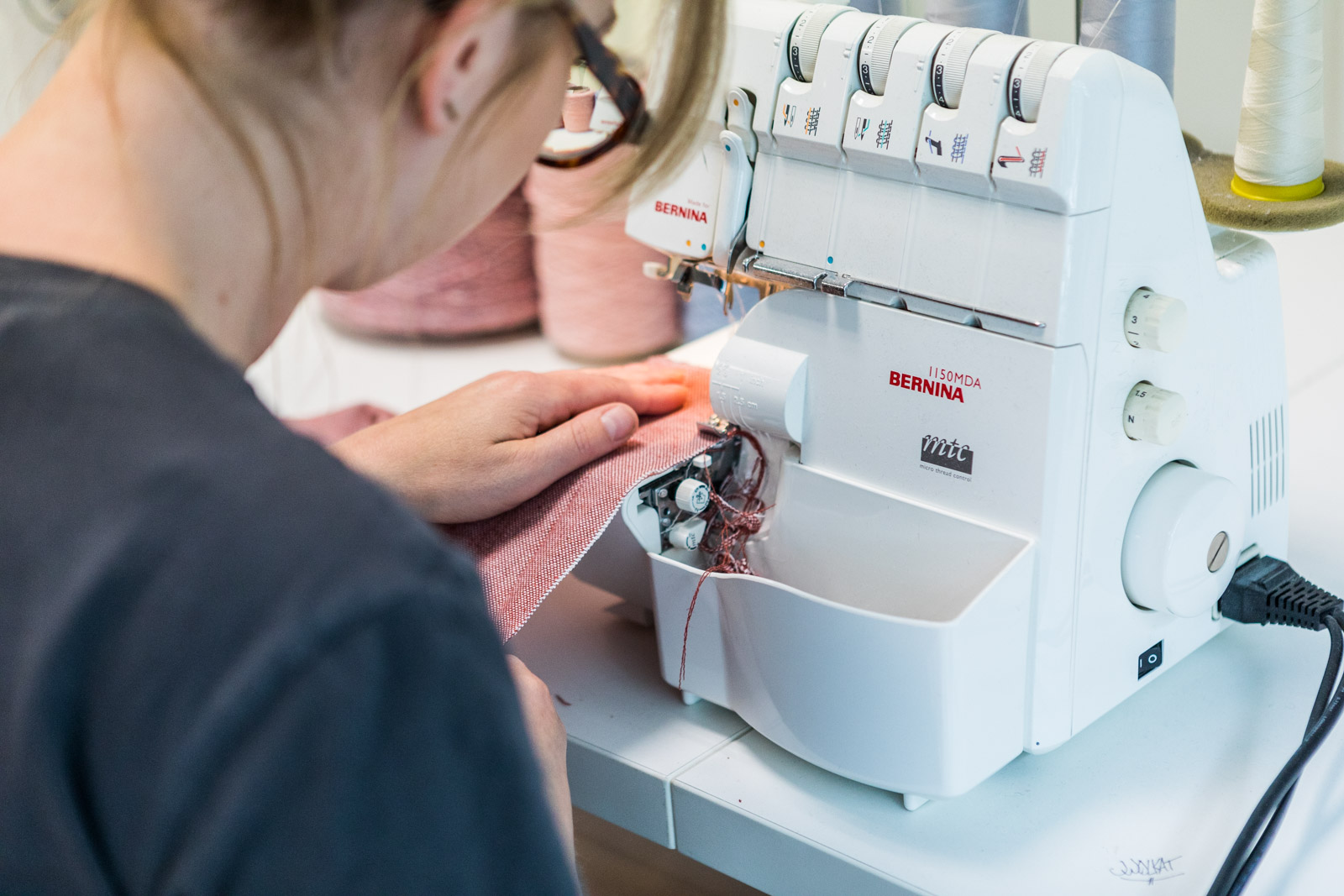The Power of Legislation – row to repair
Wolkat is recycling textiles in our facilities in Morocco since 1995. Recycling post-consumer textiles is better in terms of environmental impact (climate change in kg CO2 eq and water use in m3) than incinerating textiles for energy generation. In turn, reusing second-hand textiles is better for the environment than recycling[1]. These different R strategies (Reduce, Repair, Reuse, Recycle) are part of the so-called Waste hierarchy[2], which describes which R strategy should be considered first. European legislation examines in various ways how the lifespan of a (textile) product can be extended by applying the Waste hierarchy. Below you can read about two types of legislation the European Union is currently working on and you as a consumer will have to deal with in the future.

Right to repair
What do you do if your favorite sweater breaks? Throw it away, repair it yourself or have it repaired by a tailor? Unfortunately, most consumers now often choose the first option, also because it is (too) cheap to buy a new fast fashion favorite sweater. As the European Commission wrote in the Sustainable & Circular Textiles Strategy[3], “Fast Fashion must be out of Fashion”. The Right to repair[4]legislation for consumers is a step in the right circular direction. This legislation obliges clothing brands to offer a repair service to their consumers and to repair these products. This is only necessary if repairing is not more expensive than supplying a new product.
There are several clothing brands already working on this; Patagonia and Decatlon work together with United Repair Center in Amsterdam, whom repair broken and/or damaged clothing on a large scale[5]. You may have seen the Tegenlicht episode “de wegwerpmaatschappij” [6] featuring the Dutch company Bever promoting the repair of broken (textile) products by selling tools and parts in their stores and offering a repair service for their customers[7].
The Tegenlicht episode also mentions the so-called repairability index and the associated label that have been introduced in France for 5 categories of household appliances (washing machines, computers, smartphones, dishwashers and lawn mowers). The products have a label that indicates how easy the device is to repair. Documentation of the process, possibility of disassembly, availability and price of spare parts, and other product-specific aspects of the device were examined. The label shows a rating from 1 (hard to repair) to 10 (good to repair). In addition, the French government has set up a fund that reimburses part of the repair costs, so that people with a small wallet can have their products repaired. Both measures would be interesting to also make mandatory for clothing in order to promote circularity and a longer life cycle for your garment.
Empowering consumers for the green transition
The first draft of the Empowering consumers for the green transition are related to the Right to repair described above, but also to the Green Claims Directive[8] and the revision of the Textile labeling rules[9] mentioned in the previous Wolkat blog. In general, it is about better informing consumers about the impact, composition, and origin of a textile product. It also states that (textile) products must last at least 2 years with normal use and laundry. This last statement can be quite a challenge for Fast Fashion producers who, through so-called Planned Obsolescence, deliberately put poor quality, trend-sensitive clothing on the market and thus want to stimulate you as a consumer to always buy something new[10].
Both the Right to repair and the Empowering consumers for the green transition will probably only come into force around 2025. Do you want to repair your own clothes, but are you unable to do so yourself (yet)? Take a look at the repair tutorials on the Fixing Fashionwebsite[11]. In the end it is of course best to buy less (Reduce). Me myself for example, I didn’t buy any (neither new nor secondhand) clothes for a year. This was quite difficult, but if you are still looking for a new challenge and a good new years resolution for 2024, this might be a good one.
[1] LCA-based assessment of the management of European used textiles, Norion, VITO, Eigendraads, 2023, https://circulareconomy.europa.eu/platform/sites/default/files/2023-02/LCA-based%20assessment%20of%20the%20management%20of%20European%20used%20textiles_corrected.pdf
[2] Waste hierarchy, EUR-lex, EU, https://eur-lex.europa.eu/EN/legal-content/glossary/waste-hierarchy.html
[3] EU strategy for sustainable and circular textiles, European Commission, https://environment.ec.europa.eu/strategy/textiles-strategy_en
[4] Rules promoting the right to repair of goods, European Commission https://commission.europa.eu/law/law-topic/consumer-protection-law/consumer-contract-law/rules-promoting-repair-goods_en& EU Proposal for a Repair of Goods Directive, HEY FASION 2023
[5] ‘Repair is the new cool’: how Amsterdam started a fashion revolution, The Guardian 2023,
[6] VPRO tegenlicht “de wegwerpmaatschappij”, 5 oktober 2023 https://www.vpro.nl/programmas/tegenlicht/kijk/afleveringen/2023-2024/de-wegwerpmaatschappij.html
[7] Kledingreparatie bij Bever, https://www.bever.nl/expertise/outdoor/reparatie-service-kleding.html
[8] Proposal for a Directive on Green Claims https://environment.ec.europa.eu/publications/proposal-directive-green-claims_en
[9] Textile labelling rules (revision, European Commission, https://ec.europa.eu/info/law/better-regulation/have-your-say/initiatives/13872-Textile-labelling-rules-revision-_en
[10] Planned Obsolescence in Fashion: Why Your Clothes ‘Expire’, 2022 https://www.projectcece.com/blog/531/planned-obsolescence-in-fashion/
[11] Fixing fashion, Repair, https://community.fixing.fashion/academy/repair/intro